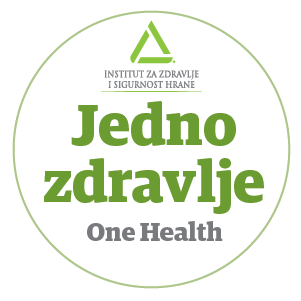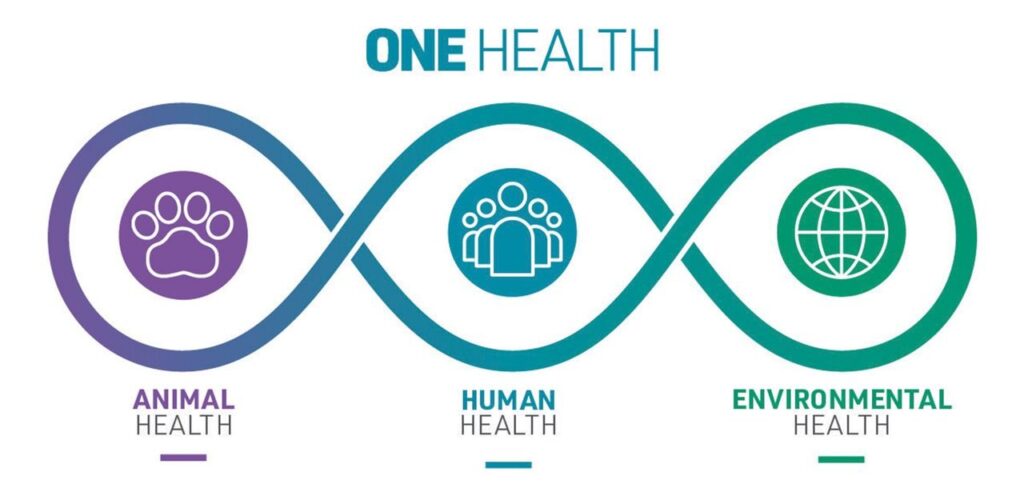For the year 2019, 28 MS submitted data and national zoonoses reports on monitoring results in food, animals, feed and food-borne outbreaks. In addition, data and reports were submitted by four non-MS and European Free Trade Association (EFTA) countries: Iceland, Norway, Switzerland and Liechtenstein. For some food, animal and feed matrices and food-borne outbreaks, EFSA received data and reports from pre-accession countries Albania, Bosnia and Herzegovina, the Republic of North Macedonia, Montenegro and Serbia. Data were submitted electronically to the EFSA zoonoses database, through EFSA’s Data Collection Framework (DCF). The deadline for data submission was 31 May 2020.
Zoonoses (from the Greek words zoon – animal and nosos – disease) represent a group of infectious diseases, common to humans and individual animal species, which can be transmitted from animals to humans and vice versa. The causative agents of zoonoses are primarily found in animals but can also be transmitted to humans under certain circumstances. Sources of zoonosis can be both domestic and wild animals.
Humans can become infected directly through live animals (contact with saliva, feces, urine, and bites or scratches) or after consuming contaminated food of animal origin. The severity of the symptoms of the disease in humans can vary from mild symptoms to life-threatening conditions. Zoonoses can be especially dangerous for babies and children, pregnant women, the elderly, and people with weakened immune systems. Every year, millions of people get food-borne zoonoses.
Zoonoses have been known for many centuries, and to date over 200 have been described. Microscopic organisms such as viruses, bacteria, parasites, fungi or other unconventional pathogens such as prions are most commonly cited as pathogenic organisms that can cause zoonoses. The most common, however, are zoonoses caused by bacteria, among which Salmonella and Campylobacter should be mentioned as more significant. The main symptoms of zoonoses caused by these bacteria are: fever, diarrhea, abdominal pain, weakness and nausea.
According to the World Health Organization (WHO), about 75% of all infectious diseases that have affected humans in the last ten years are caused by pathogenic organisms originating from animals or products of animal origin. Many of these diseases have the potential to spread in different ways and over long distances and can very easily become a global problem, and the best example of this is the current COVID-19 pandemic. Namely, COVID-19 is a zoonotic disease caused by the SARS-CoV-2 virus, which originates from bats, and passed on to humans indirectly – through a vector (most likely pangolin).
Some zoonoses, such as rabies, brucellosis, leishmaniasis and echinococcosis, occur continuously in a number of countries, especially in developing countries where they affect the poorest sections of the human population, causing a large number of diseases, which can affect millions a year, many of them and fatal outcome. In addition, major zoonoses affect the efficient production of food of animal origin and create barriers to international trade in animals and animal products and can therefore be concluded to have an important impact on socio-economic development.
The number of reported human cases of illness caused by Campylobacter and Salmonella bacteria across Europe appears to be stabilising over the past five years, according to the latest report on zoonotic diseases by the European Food Safety Authority (EFSA) and the European Centre for Disease Prevention and Control (ECDC).
Campylobacteriosis, which has been the most reported gastrointestinal disease in EU since 2005, affected more than 220,000 people in 2019. Salmonellosis was the second most reported zoonotic disease in the EU, affecting about 88,000 people.
The next most reported diseases were Shiga toxin-producing Escherichia coli (STEC) infections, yersiniosis and listeriosis. The trend of confirmed human cases of listeriosis was stable in 2015-2019, after a long period of increase. There were 2,621 cases reported in 2019, mainly affecting people over 64 years old. It was the most severe zoonotic disease, with high rates of hospitalisation (92%) and fatality (17.6%).
The report also monitors the cause of foodborne disease outbreaks in the EU, events during which at least two people contract the same illness from the same contaminated food. Salmonella remained the most frequently detected agent and caused 926 outbreaks, but the number of outbreaks due to S. Enteritidis decreased. The most common sources of salmonellosis outbreaks were eggs and egg products. Noroviruses in fish and fishery products caused the highest number (145) of outbreaks that have “strong evidence” implicating a food source.
A total of 5,175 foodborne outbreaks were reported in 2019, a decrease of 12.3% compared to 2018.
The report also includes data on Mycobacterium bovis/caprae, Brucella, Yersinia, Trichinella, Echinococcus, Toxoplasma gondii, rabies, Q fever, West Nile virus and tularaemia.
An overview of the frequency of individual zoonoses covered by this Report is given in the table below.
Table 1: Reported hospitalisations and case fatalities due to zoonoses in confirmed human cases in the EU, 2019
| Disease | Number of
confirmed human cases |
Hospitalisation | Deaths | ||||||
| Status
available (%) |
Number of
reporting MS(b) |
Reported
hospitalised cases |
Proportion
hospitalised (%) |
Outcome
available (%) |
Number of
reporting MS(b) |
Reported
deaths |
Case
fatality (%) |
||
| Campylobacteriosis | 220,682 | 29.1 | 16 | 20,432 | 31.8 | 78.0 | 17 | 47 | 0.03 |
| Salmonellosis | 87,923 | 44.5 | 15 | 16,628 | 42.5 | 71.8 | 17 | 140 | 0.22 |
| STEC infections | 7,775 | 37.3 | 18 | 1,100 | 37.9 | 61.0 | 20 | 10 | 0.21 |
| Yersiniosis | 6,961 | 27.4 | 15 | 648 | 33.9 | 57.0 | 14 | 2 | 0.05 |
| Listeriosis | 2,621 | 51.1 | 19 | 1,234 | 92.1 | 65.1 | 20 | 300 | 17.6 |
| Tularaemia | 1,280 | 22.8 | 12 | 149 | 51.0 | 21.6 | 13 | 1 | 0.36 |
| Echinococcosis | 739 | 33.3 | 14 | 109 | 44.3 | 31.4 | 14 | 2 | 0.86 |
| Q fever | 950 | NA(c) | NA | NA | NA | 67.3 | 13 | 4 | 0.63 |
| West Nile virus
infection(a) |
443 | 83.7 | 9 | 347 | 93.5 | 99.3 | 11 | 52 | 11.8 |
| Brucellosis | 310 | 44.5 | 11 | 98 | 71.0 | 36.8 | 12 | 2 | 1.75 |
| Trichinellosis | 96 | 16.7 | 5 | 6 | 37.5 | 25.0 | 7 | 1 | 4.20 |
| Rabies | 4 | NA(c) | NA | NA | NA | 75.0 | 3 | 3 | 100.0 |
| MS: Member State.
(a): Instead of confirmed human cases, the total number of human cases was included. (b): Not all countries observed cases for all diseases. (c): NA: Not applicable as the information is not collected for this disease. |
|||||||||
Source: The European Union One Health 2019 Zoonoses Report, European Food Safety Authority, European Centre for Disease Prevention and Control, APPROVED: 19 January 2021, DOI: 10.2903/j.efsa.2021.6406, EFSA Journal 2021;19(2):6406
https://www.efsa.europa.eu/en/efsajournal/pub/6406
ONE HEALTH – ONE WORLD – ONE FUTURE
Edited by: Rusmir Goletić, DVM

